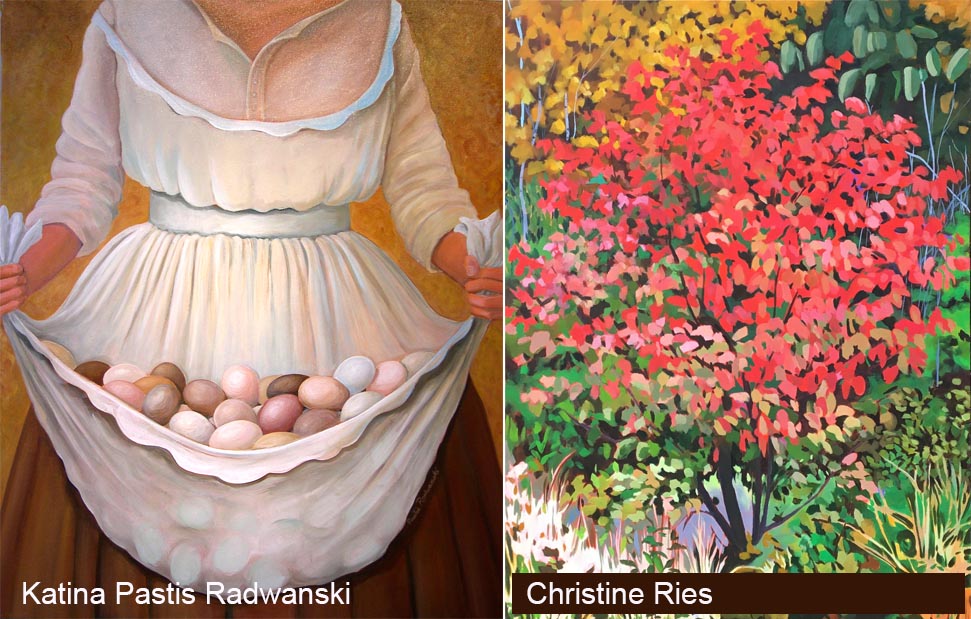By Becky Raspe
In the right hands, contemporary art can serve to contextualize current events and provide pointed commentary on the world around us. “Toe Tag” – which through the lens of the Iraq War remarks on the toll war takes on communities – demonstrates that Juliellen Byrne’s hands are quite capable in this regard. By combining doll-like heads and praying hands with slips of paper that list the names of people killed during the eight-year war, Byrne explores one of humanity’s oldest dualities – innocence versus violence – while seeking to sculpt viewers’ perspectives along the way.
Kaleigh Pisani-Paige, curator of collections and registrar at the Canton Museum of Art, discusses the piece – part of the museum’s permanent collection – and what can be learned from it.
CANVAS: What makes this piece noteworthy? What should viewers note when they see it at the museum?
Pisani-Paige: What makes this piece particularly noteworthy is the juxtaposition between innocence and violence. Innocence is depicted through the double-ended doll with accompanying hands that are praying –
two very virtuous acts. There is violence, however, shown through the paper “toe tags” that adorn the figure, each of which are covered in the names of soldiers killed in the Iraq War. This juxtaposition is a commentary on sending children off to war and the ultimate price of doing so.
Byrne also notes that praying is sometimes all someone can do when a loved one is sent to war, and the feeling of powerlessness in this act. “Toe Tag” reminds us that every soldier sent to war is someone’s child, and it serves as a mother’s response to war and violence. Another noteworthy fact is the power struggle present in acts of war, with the top, larger head representing those in power whose policies decide the fate of every soldier.
What response or emotions does this piece invoke?
At first glance, this piece comes off as somewhat disturbing. Once you know the meaning of the piece, it evokes sadness, as well as a feeling of hopelessness, once you see the praying hands and the toe tags. It can also read as a call to action, seeing how the list of names and the power struggle between warfare and policymakers has only produced negative results.
What’s noteworthy about the materials used or the process he or she employed for this piece?
The materials used to make this piece were clay, cotton cloth, waxed line and wire-strung paper tags. The use of paper tags, in particular, holds a striking meaning that is crucial to the piece. This material was used to give the impression of price tags, showing that innocent lives are the price of war.

How does it fit into the artist’s larger body of work?
Several years before creating “Toe Tag,” Byrne started an ongoing body of work called “100 Dolls.” She gave herself until she was 100 years old to complete the series, making it an ongoing process. “Toe Tag” is one from the series.”
What was happening at the time that might’ve influenced this piece?
This piece was created during a period of international violence. In 2009, the Iraq War was fully active and hundreds of thousands of (international) troops were being killed in combat.
What makes this piece relevant today?
This piece will remain timeless because of the sons and daughters that will lose their lives in acts of warfare to come. There is also current relevancy in “Toe Tag” due to the political powers that remain in charge of violent acts, and the policies that are enacted to deal with such things. There is also a need for the public to remember the names of those lives lost, as this piece calls for us to do. CV

On View
“Toe Tag”
Artist: Juliellen Byrne
Details: “Toe Tag,” 2009; clay, cotton, waxed line and wire strung paper tags; 45 x 14 x 9 inches. Images courtesy of the Canton Museum of Art.
Acquired: The piece “Toe Tag” was purchased directly from the artist.
Find it: “Toe Tag” is in the museum’s permanent collection and will be on display during the museum’s “Spirit of Clay” exhibition from Aug. 30 to Oct. 20.











